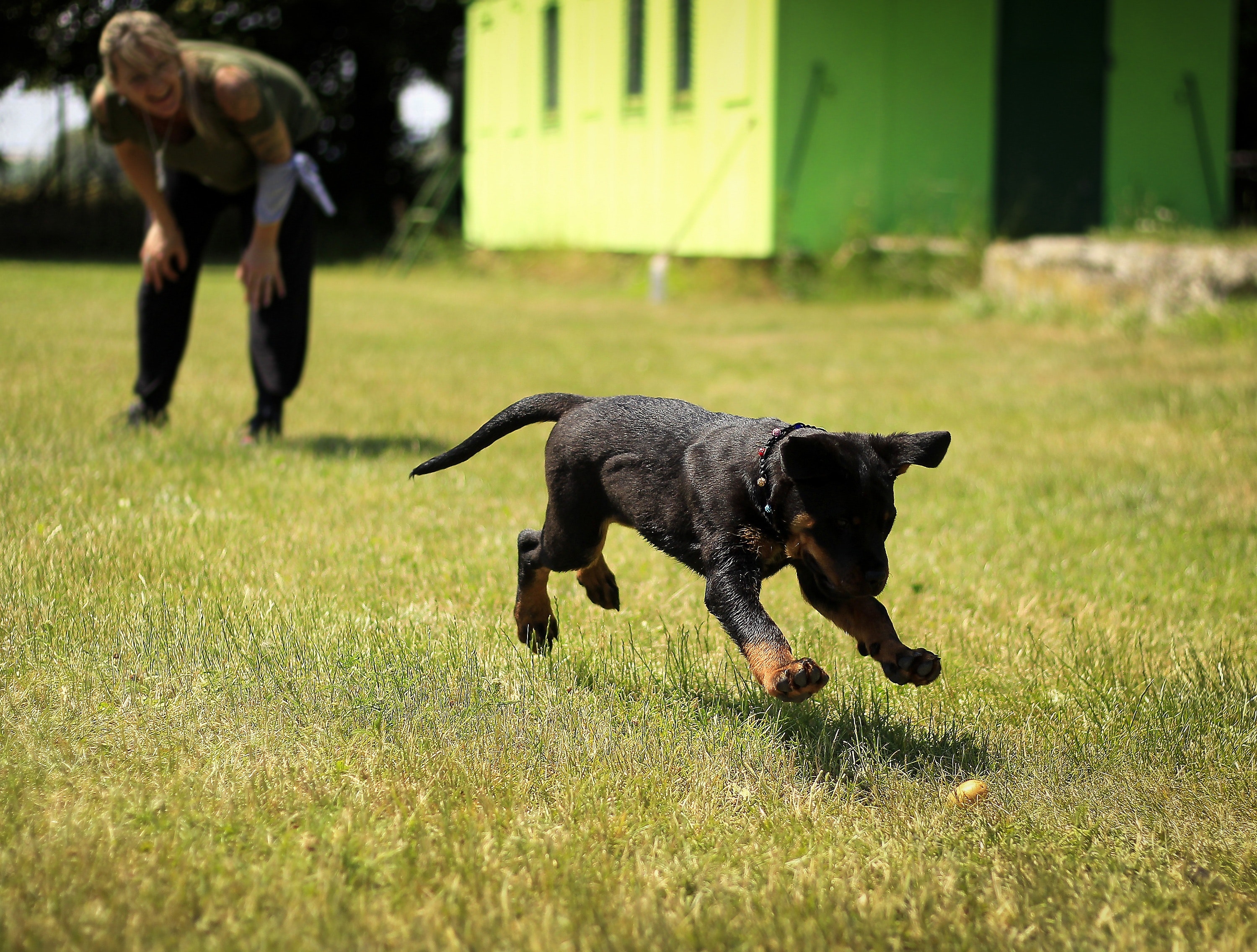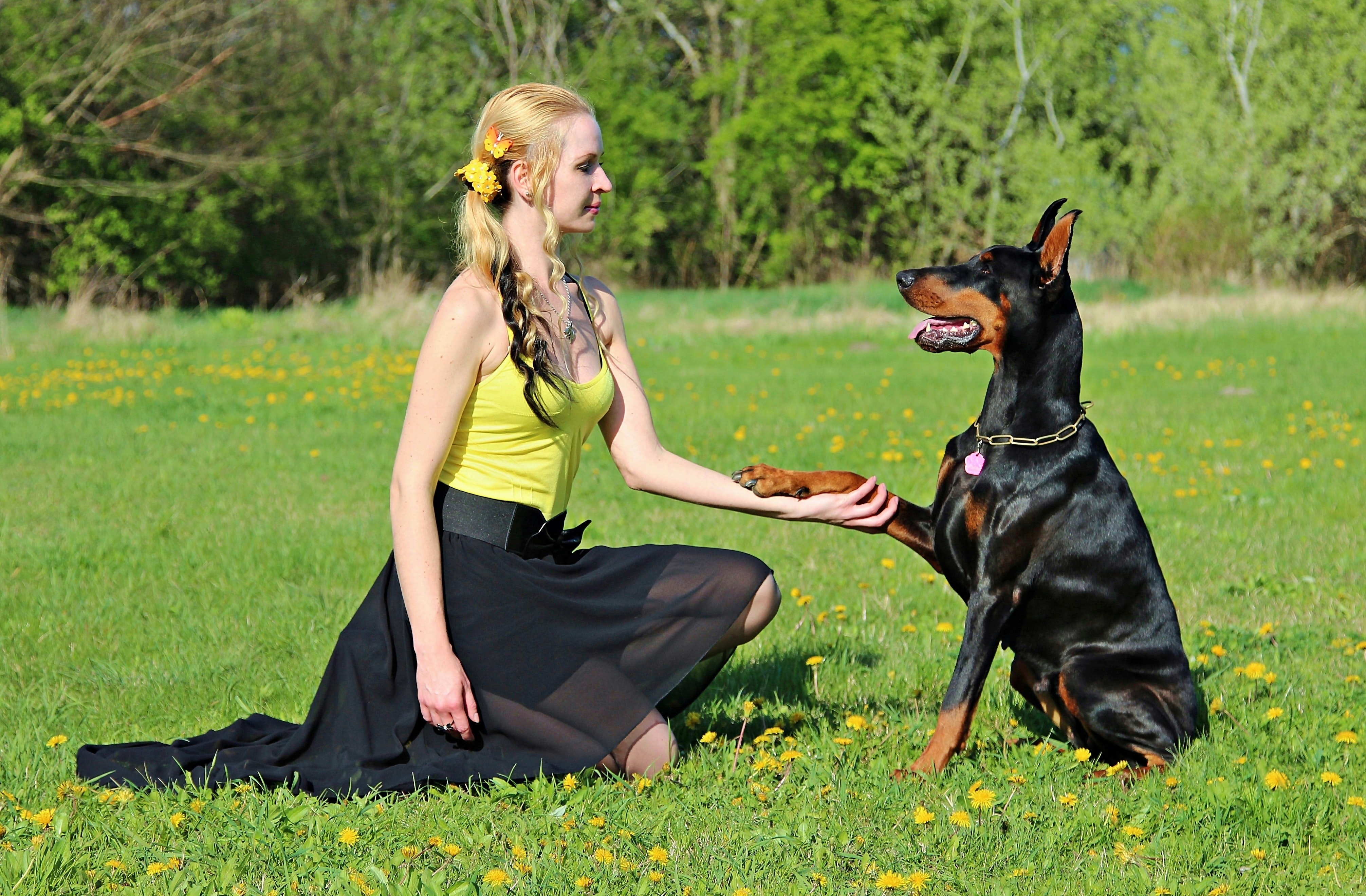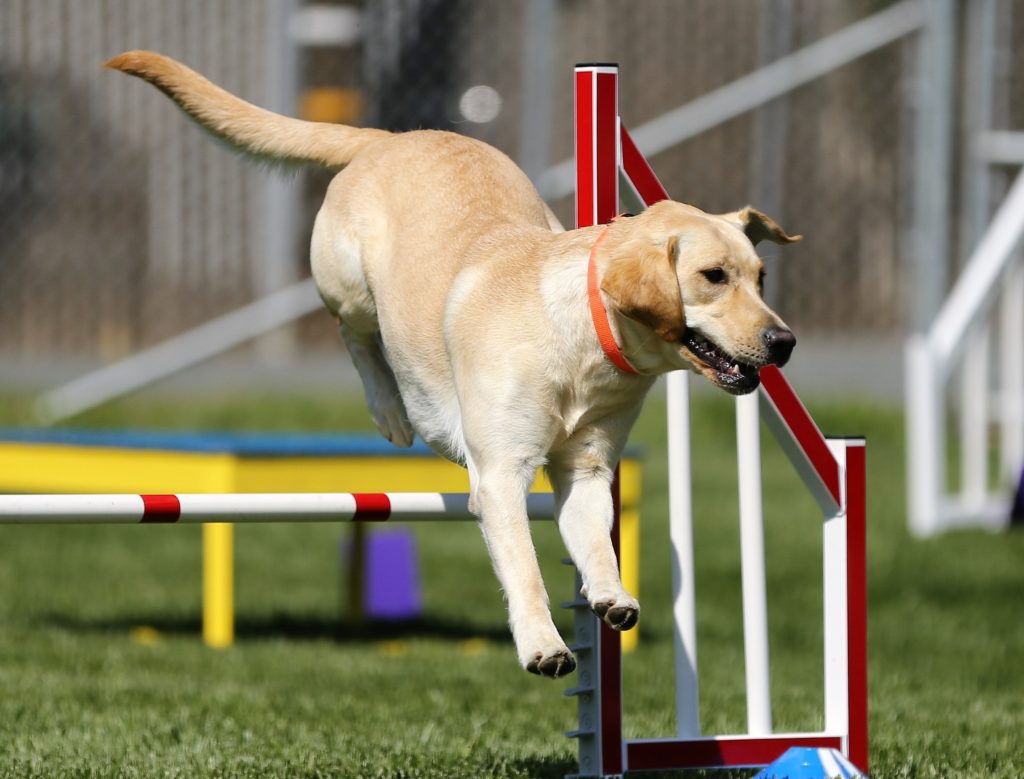As a dog owner, there are a number of different dog activities and sports to partake in with your loving companion. When it comes to activities for your pup, you want to find exercises that are both physically and mentally challenging.
One of the most popular spots today is dog agility. This guide will provide you with all the foundational knowledge you need for dog agility training. Through this article, you’ll be able to gain a general understanding of what it is and how to determine whether or not agility training is right for your dog.
What is Dog Agility Training?
 Agility training is a sport for dogs where the owner directs the canine through a pre-set obstacle course within a predetermined time limit. The number of obstacles can vary depending on the course, but will often include between 14 and 20 obstacles. Agility training courses will include a number of different obstacles that are designed to challenge the dog in different ways. Below are a handful of the most commonly used obstacles in dog agility training.
Agility training is a sport for dogs where the owner directs the canine through a pre-set obstacle course within a predetermined time limit. The number of obstacles can vary depending on the course, but will often include between 14 and 20 obstacles. Agility training courses will include a number of different obstacles that are designed to challenge the dog in different ways. Below are a handful of the most commonly used obstacles in dog agility training.
- Weave poles
- Tire jumps
- Seesaws
- Tunnels
- Pause tables
- Dogwalk
- Standard jumps
The owner is responsible for directing the dog through the course of obstacles in the correct order and within a set time limit. In a dog agility training competition, as the dog is navigating the obstacle course, they are judged and scored on their performance. Factors that may be judged can include the speed with which they finish each obstacle, their foot positioning, the height of their jumps, and more. Judges for agility training will often note the number of faults in the performance of the obstacle course in order to determine the ranking of the dog in relation to other competitors. Dogs will often navigate several unique courses during a single agility training competition.
Dogs that participate in agility training have to be very well-trained in order to follow and complete each course. Agility training competitions, also referred to as “trials”, allow owners to test their dog’s abilities and training in a competitive environment to see how their dog’s performance compares to other canines. Dogs of all breeds can participate in agility training, including mixed breeds, miniature breeds, and toy breeds.
How to Determine If Agility Training is Right For Your Dog
Although Agility training is great for both mental and physical stimulation, it may not be the best practice for every dog. Dogs that are highly driven and energetic, motivated to work, responsive to instructions, and physically motivated, are excellent candidates for this sport. However, it is also important to note that the dog is only half of the equation, the owner’s temperament is equally important. While a dog owner does not need to be a professional to participate in agility training, it will require extra effort and commitment to properly train a canine for this sport.
The Benefits of Agility Training
Agility training can be a great way to build communication and trust between the dog and owner. Below are a few of the top benefits of dog agility training.
 Improved Behavior
Improved Behavior
One of the most notable benefits of agility training is a positive impact on a dog’s behavior and his relationship to his owner. Agility training forces the dog to learn a new set of skills while also exercising, which results in a combination of mental and physical stimulation. Dogs are often motivated to work and complete the jobs that they are given by their owners.
When a dog becomes bored and unchallenged, that is when canine behavioral issues arise. Dogs that are bored will result to creating their own fun, which unfortunately results in destructive and problematic behavior. Agility training gives a dog a variety of mental and physical challenges, which can help to decrease these negative behaviors.
In addition to these behavioral benefits, agility training also requires the dog to improve his ability to follow commands. Agility training relies on the dog’s ability to follow basic commands and then expands on those tricks to include more complex directions. For a dog to successfully make its way through the various obstacles, he must be able to obey a variety of directions from his owner.
Improved Bond Between The Dog and Owner
In addition to being beneficial for a dog’s behavior, agility training can also improve and strengthen the bond between the dog and the owner. When a dog and an owner are working together to complete a task, the dog is the handler and they are a team working towards a common goal. Together, the dog and the owner will continue to work on the various portions of the obstacle course until they can complete it in its entirety within the allotted time.
This can build trust between the dog and his handler as the owner guides the dog through the course. As the dog follows the commands given by his handler, he is driven towards successful completion of the course. This builds and strengthens the bond as both parties must complete their role in order for the team to be successful.
Exercise
A dog requires physical exercise in order to burn off their excess energy and remain physically fit. Similar to a sport for humans, agility training allows dogs to remain physically active while also introducing an aspect of intellectual challenge and fun to their exercise routine. This sport can also be an excellent workout for the owner as well.
How to Get Involved in Agility Training
If agility training seems like it may be a good fit for your dog, there are a number of different ways to get started. Below are a few tips on how to introduce your dog to agility training.
Take a Class
One of the best ways to get involved in agility training is to take a class. Many different dog training clubs offer beginner’s courses for agility training that will teach both the owner and the dog how to partake in this sport. Since agility training requires a canine to be successful in following basic dog obedience commands, it can also be beneficial to enroll in a beginner obedience class to reinforce common commands. For a beginner’s course, dogs and their owners will be introduced to a variety of different obstacles and given foundational knowledge about how agility training competitions work. If you find that agility training is a good fit for you and your dog, there are also more advanced courses you can enroll in as well.
Train at Home
 While training in a course with an instructor is great in the beginning, this sport does not have to stop there. You can also practice new commands at home or on your daily walks. Owners can purchase obstacles to aid in training. For beginner’s, obstacles that may be useful are tunnels and weave poles. Agility training requires commitment and reinforcement to succeed, but it doesn’t have to be incredibly time-consuming. By attending a beginner’s course and training at home for fifteen to twenty minutes a day, a dog and its owner can improve significantly at this fun and fast-paced sport.
While training in a course with an instructor is great in the beginning, this sport does not have to stop there. You can also practice new commands at home or on your daily walks. Owners can purchase obstacles to aid in training. For beginner’s, obstacles that may be useful are tunnels and weave poles. Agility training requires commitment and reinforcement to succeed, but it doesn’t have to be incredibly time-consuming. By attending a beginner’s course and training at home for fifteen to twenty minutes a day, a dog and its owner can improve significantly at this fun and fast-paced sport.
Consider Participating in an Agility Training Competition
For some dogs and their owners, agility training may be a natural fit and something that they excel at and want to take to the next level. For agility training, dogs can partake in competitions to test their accuracy and speed.
If you are wondering if you and your dog are ready to take your agility training to the next level, you can test where your skill level is at by taking the American Kennel Club (AKC) Agility Course Test (ACT).
There are three types of agility trials you can compete in. The three types of agility trials are outlined below.
- All-breed agility trials: These open to over 150 breeds of dogs recognized by the AKC. This is the most common type of agility trial you can participate in.
- Specialty trials: Trials that are restricted to a specific breed or variety of a breed.
- Group trials: Trials that are limited to a specific breed group, such as working dogs or herding dogs.
Agility Competition Eligibility
If you think you and your dog should compete in agility trials, it is important to note that you must be eligible to join. Below are the requirements a dog needs to be able to compete in agility trials according to the AKC.
- Your dog must be at least fifteen months of age or older.
- Your dog must be registered with the AKC. If your dog is an unregistered dog but is a part of a registerable breed, you can register your dog through the AKC Indefinite Listing Privilege (ILP) program, which will allow him to compete in AKC Performance and Companion events.
- Your dog must be spayed or neutered in order to compete.
- Your dog must be in good health and have all required vaccinations.
Agility training can be a great way for owners and their pets to bond and to make training a fun experience.
Sources:
“Dog Agility Training for Beginners: How to Get Started.” SitStay, sitstay.com/blogs/good-dog-blog/dog-agility-training-for-beginners.
“Agility: Get Started .” American Kennel Club, 26 Oct. 2017, www.akc.org/sports/agility/getting-started/.
“Dog Agility Training 101.” Wide Open Pets, 22 Mar. 2019, www.wideopenpets.com/dog-agility-training/.




